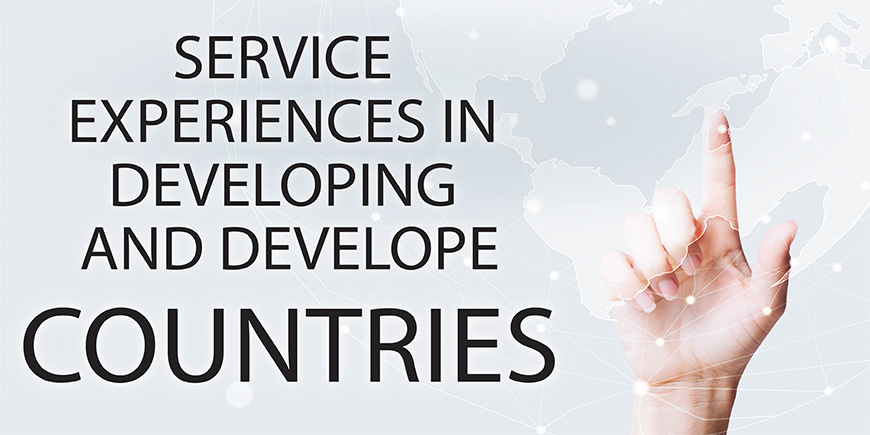
A service is an experience that a consumer goes through the performance of a
service provider. The consumer does not get something tangible in hand but his/her
need is satisfied. This way, a service stands equivalent to a product, but it is not a
mere product, it is a bundle of elements of customer satisfaction associated with
the skills and expertise of the service provider. Role of products in the services
industries is limited but not insignificant, For example, in a beauty salon, it is not
just the skill and expertise of the beautician that matters for the customer, but also
the quality of beauty products that she applies on the skin; hair etc. of the
customer, is also a major factor of customer satisfaction.
Any industry that provides services to the consumer is a service industry. Rohini
Suri Gupta defines a service industry as service business and says, “A service
business is what the name implies doing a job for another business or an
individual, a job they cannot, will not or rather would not do by themselves. So
service industries are those industries which perform for others. The list of these
service industries is endless. Service providers have been very innovative in
providing the customers with a variety of services. Today services like banking,
transportation, tourism and hospitality, healthcare, accounting and education
services etc. are being provided by services industry. Very recently, a new range of
IT enabled services has entered this industry. Brands like Ola, Uber, Swiggy,
Amazon, are providing a new comfort level to the customers with this range of
services to the customers.
It would be an interesting exercise to explore all these service industries one by one while comparing their performance in a developing and a developed country. But for this article, we shall discuss the tourism industry’s performance in the two different economies- Australia as a developed country and India as a developing country.
Let us understand the concept of developing and developed economies. In a developing country, the industrial base and human development index is low as compared to developed countries. Low and middle income economies are developing economies, while upper middle or high income economies are developed economies. For example Australia and United States which are developed countries, their per capita nominal GDP (in USD) is 62,723 and 68,309 respectively while in India and Bangladesh it is very low, just 2,265 and 2,122 merely. (As per IMF estimates for 2021)
Popularity of different services is significantly different in the two kinds of economies. In a country like India, household task performing (maids and servants are easily available) services are the most popular and widely used services, while in a country like Australia, where nuclear families are a common social trend, day- boarding services are more popular, where the parents can leave their kids when they go to work every day.
In this article, we are discussing:-
- The case of an Indian traveler who travelled from India to Australia.
- His experience in the Indian airline and Australian Airline will help us in analyzing the performance of services provided by the airlines of developing and developed economies.
- While travelling from Australia to India and the way back, he used two airlines- ‘Air India’ and ‘Qantas Airways’.
The Four parameters listed below are used to draw a comparison between the two airlines:
Appearance and behavior of the staff
- The staff in the Air India airplane was wearing ethnic Indian outfits and was seen following western etiquettes with the Indian greeting - saying ‘Namaskar’ with joined hands. Slight smile could be seen on their faces. The staff was making the customers comfortable in the plane. One senior air hostess was there who was quite serious in her appearance, while all other members of the crew (stewards and air hostesses) were young and cheerful.
- In the Qantas Airways plane, the staff could be seen in western outfits, following the western etiquettes with a broad smile on their face. The passengers were greeted with a soft western greeting of the day. All the staff was young in age, no senior looking person was a part of their team.
There was one thing that was specifically noticed by our passenger that the airhostess of Qantas Airways was continuously smiling while talking to the passengers, while the Indian air hostesses started the talk with a smile but in no time went back to their serious faces. He also remembers an incident , when the air hostesses came to collect the garbage from the passengers, Indian air hostesses showed reluctance when a senior passenger called them back to help with his empty bins which he wanted to dispose of, while the Qantas Airlines staff seemed more polite and helpful to the customers of the airlines.
Food served in the plane: The passenger was a Jain vegetarian and while booking the ticket, ordered a vegetarian Hindu meal; his preference Jain food was not available even in the Indian airlines. If the Indian airline served traditional Indian thali with dal, chapati and papad, Qantas Airways served, stuffed bread, fruit, curd, buttermilk. The only good thing about food served in Qantas Airways was that the air hostess came back to check if the food was as per his food habits and standards. As we Asians are known for our typical food habits so the passenger could not help smiling but the small and sweet gesture of the air hostess added the courtesy flavor to the Qantas Airways service and left a very good impression on the customer. The customer was ready to spread good word of mouth publicity for Qantas Airways food service on the plane.
Luggage handling in the plane-Our passenger, like any other typical Indian, was trying to utilize the maximum luggage limit of 30 kilograms allowed by the Airlines and the 7 kgs limit for the hand luggage, he was carrying two suitcases, one big 7 kgs handbag and a laptop bag which was carrying fifty other things with the laptop. After giving the suitcases to the ground staff, he was still left with a big seven kilograms handbag which he was carrying on his shoulder and a computer bag in his right hand. He boarded the plane with the two bags.
- In the Indian Airlines, when he was trying to keep the bag in the luggage cabins, he faced trouble because of its big size. When the Indian airhostess came to help him, suggested taking the luggage from the passenger and keeping it safely at some other place. Even after the denial gesture by the passenger, she took the luggage and the passenger was travelling without many travel essentials for him. Our passenger somehow did not feel like going and checking his luggage for the essentials.
- When he entered Qantas Airways with the same size of hand luggage, at the entrance only, the air hostess took the luggage and offered to keep it in a spacious storage area. Our passenger accompanied the airhostess and took his essentials before taking his seat in the plane.
In the passenger’s words, “I felt safer in Qantas Airways with my luggage, while in
the Indian airlines it was as if I had committed a crime by carrying that big a hand
bag to their plane.”
Such statements made by the travelers after their journey may act as a dent to the
image of Indian airline services.
Quality of accessories provided to the passengers The journey from Delhi to Singapore and then from Singapore to Sydney was long enough for a passenger to get bored. So TV screens were there at each and every seat of both the airplanes. The passenger could clearly notice the difference between audio and video quality of the films available for him to watch in both the planes. The only comfort was that he could watch a Hindi movie ‘Bajirao Mastani’ with English subtitles on his way to Singapore, whereas in Qantas Airways he did not have much choice for Indian shows. The headphone that he was using in the Indian flight, was damaged during the movie show and took the airhostess 7-10 minutes to arrange a new headphone for him, which was good enough a reason to leave the customer less satisfied.
Such observations from a customer affect the level of customer satisfaction towards a service. We see that our passenger was dissatisfied with the services provided by Indian Airline and when he was asked to draw a comparison, he declared that Qantas Airways is a much better airline to travel with. Though the experience of just one passenger should not be generalized, but such cases will help us in measuring the performance of such important international services.

Author – Dr. Alka Jain
Ph.D. MBA
Willing to benefit the society and economy with her dual experience in corporate and academic fields. Her academic experience in the northern and southern parts of the country familiarizes students with cases from both the economies of the country.

